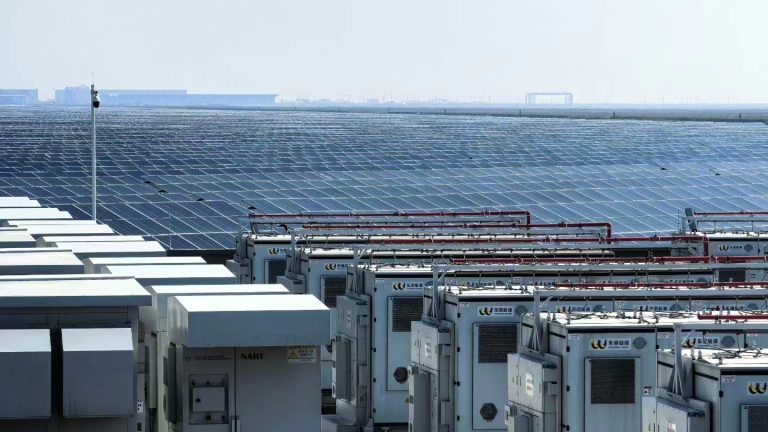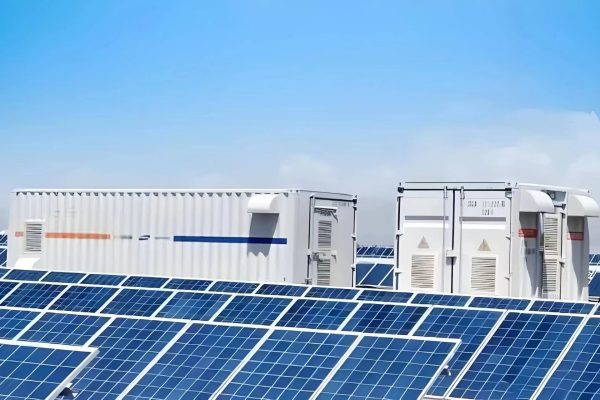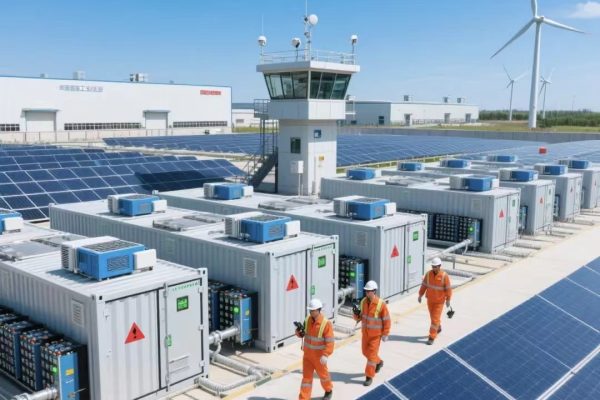As solar + storage becomes more common in small commercial and residential projects, one challenge remains: how to maximize system performance without making controls too complex. That’s where an AI-based Energy Management System (EMS) can make a real difference. By intelligently managing generation, storage, and consumption, AI tools can help small projects achieve the kind of optimization once reserved for large-scale plants.
This article explores how AI-based EMS works, why it’s useful in small PV+ESS projects, and what installers and buyers should know before adopting it.
1. What Is an EMS and Why Add AI?
A traditional EMS is essentially a rule-based controller. It monitors solar generation, storage capacity, and consumption, then executes pre-set rules like:
- “Charge the battery when PV output exceeds load.”
- “Discharge when the grid price is high.”
This works, but it’s rigid.
AI-based EMS goes further:
- Learns consumption patterns (e.g., peak loads at 6–8 pm).
- Predicts solar output from weather data.
- Adapts charging/discharging strategies automatically.
- Optimizes across multiple objectives: cost savings, backup readiness, or CO₂ reduction.
For small PV+storage systems, this means higher returns and fewer headaches.
2. Key Benefits for Small Projects
a) Smarter Self-Consumption
Instead of dumping excess PV into the grid at low feed-in tariffs, AI ensures storage is used intelligently—charging at midday and releasing in the evening when loads spike.
b) Peak Shaving Without Guesswork
Many SMEs face demand charges. AI-based EMS can predict load peaks and discharge batteries at the right time, reducing utility bills.
c) Better Battery Life
By avoiding unnecessary charge/discharge cycles and operating within optimal ranges, AI extends battery lifespan.
d) Easier Grid Integration
For hybrid projects (PV + storage + diesel), AI manages transitions smoothly, ensuring stability even in weak grids.
e) Adaptation to Local Tariffs
AI can handle time-of-use pricing automatically, something rule-based systems often can’t without complex manual settings.
3. Where AI Adds Value in Practice
- Residential Homes: AI predicts evening consumption (cooking, lighting, EV charging) and prioritizes battery use for these periods.
- Small Shops/SMEs: AI prevents costly demand spikes when equipment starts up.
- Microgrids: In community systems, AI balances multiple homes and shared storage fairly.
- Backup Priority Applications: AI ensures batteries stay partly charged if outages are likely (e.g., storm forecasts).
4. Challenges and Considerations
While AI-based EMS is promising, it’s not a silver bullet. Key issues include:
- Data Requirements: AI needs historical consumption and generation data to “learn.”
- Connectivity: Cloud-based AI requires reliable internet. In remote areas, local EMS may be better.
- Cost vs. ROI: Adding AI features increases upfront system cost. The value must justify the expense.
- Transparency: Customers may want visibility into AI decisions—black-box systems can be hard to trust.
5. Best Practices for Adoption
- Start Small: Begin with AI for load shifting and TOU optimization before scaling to full predictive analytics.
- Keep Manual Overrides: Always allow users to switch to simple modes (backup-only, self-consumption).
- Select Open Protocol Systems: Ensure EMS integrates with various inverter and battery brands.
- Educate End-Users: Explain in plain terms—“AI learns your usage and saves money”—to build trust.
6. Future Outlook
As hardware prices drop and AI algorithms become more accessible, AI-based EMS will likely become standard in small PV+ESS projects. Local integrators who can demonstrate these systems with clear cost-saving examples will have a competitive edge.
In the near future, we may see:
- AI-based EMS bundled with plug-and-play home kits.
- Peer-to-peer energy trading in microgrids, managed by AI.
- Predictive maintenance where AI flags inverter or battery issues before they fail.
For small PV+storage projects, AI-based EMS offers a path to higher efficiency, smarter use of storage, and better ROI. It transforms systems from passive energy buffers into active, adaptive energy managers. While costs and connectivity remain challenges, the benefits are becoming too compelling to ignore.
Installers and distributors who start offering AI-driven EMS today can position themselves as forward-thinking partners—helping customers save money while future-proofing their energy systems.









